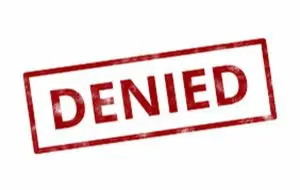Bail Bond Co-Signer Release: When and How to End Your Obligation
The role of a bail bond co-signer is a critical component of the bail bond process, providing financial assurance and support for defendants seeking release from custody. However, circumstances may arise where a co-signer wishes to end their obligation and remove themselves from a bail bond agreement. Understanding when and how to initiate a bail bond co-signer release is essential for those who find themselves in this position.
Co-signing a bail bond is a significant responsibility that carries substantial financial and legal implications. When an individual agrees to co-sign, they essentially guarantee that the defendant will appear for all required court dates and comply with the conditions of their release. If the defendant fails to meet these obligations, the co-signer may be held financially responsible for the full amount of the bail bond, which can often be a substantial sum.
The decision to become a bail bond indemnitor should never be taken lightly. Many co-signers are family members or close friends of the defendant who want to help their loved one secure release from jail. However, as time passes, circumstances can change, and a co-signer may find themselves in a position where they no longer feel comfortable maintaining their obligation.
There are several reasons why a co-signer might seek release from their bail bond agreement. One common scenario is when the co-signer begins to doubt the defendant’s reliability or commitment to attending court hearings. If the defendant exhibits behavior that suggests they may flee or violate the terms of their release, the co-signer may wish to protect themselves from potential financial liability.
Another situation that might prompt a co-signer to seek release is a change in their own financial circumstances. Co-signing a bail bond often requires the indemnitor to provide collateral or demonstrate financial stability. If the co-signer experiences a significant change in their financial situation, such as job loss or unexpected expenses, they may no longer be able to bear the potential financial burden associated with the bail bond.
Personal relationships can also evolve, leading to a desire to end the co-signing arrangement. If the relationship between the co-signer and the defendant deteriorates, or if the co-signer feels taken advantage of, they may wish to sever their financial ties to the defendant’s legal situation.
It’s important to note that the process of obtaining a bail bond co-signer release is not always straightforward and may not be possible in all cases. The ability to remove oneself as a co-signer depends on various factors, including the specific terms of the bail bond agreement, the policies of the bail bond company, and the stage of the legal proceedings.
The first step for a co-signer seeking release is to contact the bail bond agency that issued the bond. Many bail bond companies have procedures in place for handling co-signer release requests. However, it’s crucial to understand that the bail bond agency is not obligated to grant a release simply because it is requested.
When approaching the bail bond company, the co-signer should be prepared to explain their reasons for seeking release. Valid concerns about the defendant’s behavior or ability to comply with court requirements may be more persuasive than personal disagreements or minor inconveniences. The bail bond agent will likely want to assess the situation to determine if releasing the co-signer would put the agency at increased risk.
If the bail bond company agrees to consider the release request, they may require the co-signer to complete specific forms or provide documentation supporting their case. This could include evidence of changed circumstances, such as financial records demonstrating an inability to continue as a guarantor.
In some cases, the bail bond company may be willing to release the original co-signer if a new, qualified co-signer can be found to take their place. This arrangement can be beneficial for all parties involved, as it allows the original co-signer to end their obligation while maintaining the necessary financial assurances for the bail bond agency.
However, if a suitable replacement cannot be found, or if the bail bond company is unwilling to release the co-signer, the situation becomes more complex. In such instances, the co-signer may need to explore legal options or seek the assistance of an attorney specializing in bail bond law.
One potential legal avenue is to petition the court for a bail bond exoneration. This process involves asking the court to release the co-signer from their obligations and, potentially, to revoke the defendant’s bail. While courts have the authority to exonerate bail bonds, they typically do so only under specific circumstances, such as when the defendant has been re-arrested or has violated the terms of their release.
It’s important to understand that even if a co-signer is successful in obtaining a release, they may still be responsible for any fees or obligations incurred up to the point of release. The non-refundable premium paid to the bail bond company, for example, is typically not recoverable.
For co-signers who are unable to secure a release through the bail bond company or the court, there may be other risk mitigation strategies to consider. One option is to work closely with the defendant to ensure their compliance with all court requirements. This could involve helping the defendant keep track of court dates, providing transportation to hearings, or assisting with any required check-ins or monitoring.
Another strategy is to maintain open communication with the bail bond agency throughout the legal process. By keeping the agency informed of any concerns or changes in circumstances, co-signers may be able to work collaboratively to address issues before they escalate to the point where a full release becomes necessary.
Co-signers should also be aware of their rights and the limitations of their responsibilities. While they are financially liable if the defendant fails to appear in court, co-signers are not responsible for the defendant’s criminal actions or for physically ensuring their presence in court. Understanding these boundaries can help co-signers navigate their role more effectively and reduce anxiety about their obligations.
It’s worth noting that the bail bond industry and the laws governing it vary from state to state. In some jurisdictions, there are specific regulations that address co-signer rights and the process for seeking release. Co-signers should familiarize themselves with the laws in their state to ensure they understand their options and protections.
For example, in California, bail bond companies are regulated by the Department of Insurance, which provides certain protections for co-signers. These include the right to receive a copy of the bail bond agreement and to be informed of their rights and responsibilities as a co-signer. Understanding these regulations can be crucial when navigating the release process.
The bail bond industry has faced scrutiny and reform efforts in recent years, with some states implementing changes to their bail systems. These reforms may impact the role of co-signers and the processes for obtaining release from bail bond obligations. Staying informed about any legislative changes or industry developments can be beneficial for co-signers seeking to understand their options.
One trend in the industry is the increased use of technology in monitoring defendants released on bail. Some jurisdictions are utilizing GPS tracking and smartphone apps to ensure compliance with release conditions. While these technologies primarily affect defendants, they may also provide additional assurance to co-signers concerned about the defendant’s adherence to court requirements.
Another important consideration for co-signers is the potential impact on their credit score. While the act of co-signing a bail bond itself does not typically appear on a credit report, any financial judgments resulting from a defendant’s failure to appear could have significant negative consequences for the co-signer’s credit. This underscores the importance of carefully considering the decision to co-sign and taking prompt action if concerns arise.
For those who find themselves unable to secure a release from their co-signing obligations, there are still steps that can be taken to protect their interests. One option is to request additional conditions or safeguards be put in place by the bail bond company. This might include more frequent check-ins with the defendant or additional monitoring measures.
Co-signers should also be prepared for the possibility that the defendant may be re-arrested or face new charges while out on bail. In such cases, the co-signer’s obligations may extend to the new charges, potentially increasing their financial exposure. Understanding how to navigate these situations is crucial for protecting one’s interests.
It’s also important for co-signers to maintain thorough documentation throughout the bail bond process. This includes keeping copies of all agreements, correspondence with the bail bond company, and records of any payments made. Such documentation can be invaluable if disputes arise or if legal action becomes necessary.
The emotional toll of being a bail bond co-signer should not be underestimated. The stress of financial responsibility combined with concerns about the defendant’s actions can be significant. Co-signers should not hesitate to seek support, whether through counseling services or support groups for individuals dealing with similar situations.
For those considering becoming a bail bond co-signer in the future, the experiences of those who have sought release from their obligations offer valuable lessons. Careful consideration of the defendant’s reliability, one’s own financial stability, and the potential long-term implications of co-signing are essential before entering into a bail bond agreement.
Some bail bond companies offer educational resources or counseling services to potential co-signers to help them understand their responsibilities fully. Taking advantage of these resources can help individuals make more informed decisions about whether to take on the role of a co-signer.
It’s also worth exploring alternatives to traditional bail bonds, such as unsecured bonds or release on own recognizance, which may be available depending on the jurisdiction and the nature of the charges. These alternatives can potentially reduce or eliminate the need for a co-signer, mitigating the associated risks.
The legal landscape surrounding bail bonds continues to evolve, with ongoing debates about the fairness and effectiveness of the cash bail system. Some jurisdictions are exploring pretrial release programs that rely less on financial conditions and more on risk assessment and supervision. These changes could have significant implications for the role of co-signers in the future.
As the industry adapts to these changes, bail bond companies may develop new products or services designed to address the concerns of co-signers. This could include more flexible release options or additional protections for those who agree to co-sign a bail bond.
For co-signers who successfully obtain a release from their obligations, it’s important to follow through with any required steps to formalize the termination of the agreement. This may include signing release forms, returning any documentation provided by the bail bond company, and ensuring that any collateral provided is properly returned.
It’s also crucial to verify that the release has been properly processed and that all relevant parties, including the court, have been notified. Following up to confirm that one’s name has been removed from all associated documents can provide peace of mind and prevent potential future complications.
The experience of seeking a bail bond co-signer release can be a valuable learning opportunity. Many individuals who go through this process gain insights into the legal system, financial management, and the importance of carefully considering the implications of financial agreements. These lessons can inform future decision-making and potentially help others avoid similar challenges.
For those who work in the legal or financial sectors, understanding the complexities of bail bond co-signer obligations and release processes can be professionally valuable. This knowledge can be applied in advising clients or developing policies that address the needs and concerns of co-signers.
As society continues to grapple with issues of criminal justice reform and pretrial detention, the role of bail bonds and co-signers may continue to evolve. Staying informed about these developments and participating in discussions about bail reform can help shape more equitable and effective systems for pretrial release.
In conclusion, while becoming a bail bond co-signer is a significant responsibility, it’s important to remember that options exist for those who need to end their obligation. By understanding the process, communicating effectively with bail bond agencies, and being aware of legal rights and options, co-signers can navigate the release process more successfully. Whether seeking release due to changed circumstances, concerns about the defendant’s reliability, or other factors, co-signers should approach the situation proactively and with a clear understanding of their rights and responsibilities. As the bail bond industry continues to evolve, it’s likely that new solutions and protections for co-signers will emerge, potentially making the process of obtaining release more straightforward in the future.
- https://www.thebailboys.com/bail-bond-co-signer-requirements/
- https://www.orangecounty-bailbonds.com/more-on-bail-bonds/co-signing-on-a-bail-bond-know-the-facts-before-you-sign
- https://absolutebailbonds.com/locations/understanding-your-responsibility-as-a-bail-cosigner/
- http://woodsbailbonds.com/blog/understanding-the-impact-of-co-signing-for-a-bail-bond-on-your-credit-score/
- https://www.ibisworld.com/united-states/industry/bail-bond-services/5002/
- https://www.budgetbailbondsct.com/the-role-of-a-co-signer-in-the-bail-bond-process
- https://www.thebailboys.com/how-to-get-your-name-off-of-someones-bail-bond/
- https://pcsbailbonds.com/what-happens-if-i-co-sign-a-bail-bond/
- https://bailhouse.com/bail-bonds-info-center/bail-bonds/common-bail-bond-co-signer-questions-and-answers
- https://www.pandadoc.com/ask/how-to-get-out-of-a-bail-bond-contract/
- https://freeatlastbb.com/blog/bail-bond-co-signer-requirements/
- https://www.budgetbailbondsct.com/the-role-of-a-co-signer-in-the-bail-bond-process
- https://www.orangecounty-bailbonds.com/more-on-bail-bonds/co-signing-on-a-bail-bond-know-the-facts-before-you-sign
- https://www.ibisworld.com/united-states/industry/bail-bond-services/5002/
- http://woodsbailbonds.com/blog/understanding-the-impact-of-co-signing-for-a-bail-bond-on-your-credit-score/
- https://bailhouse.com/bail-bonds-info-center/bail-bonds/common-bail-bond-co-signer-questions-and-answers












